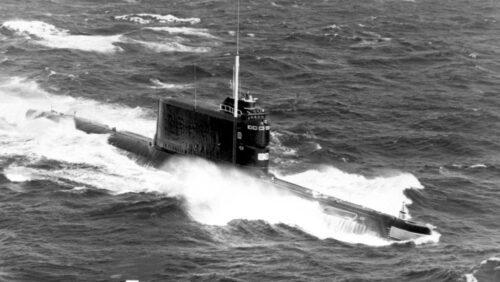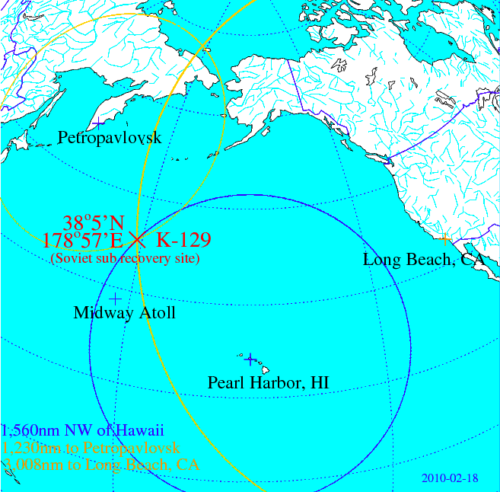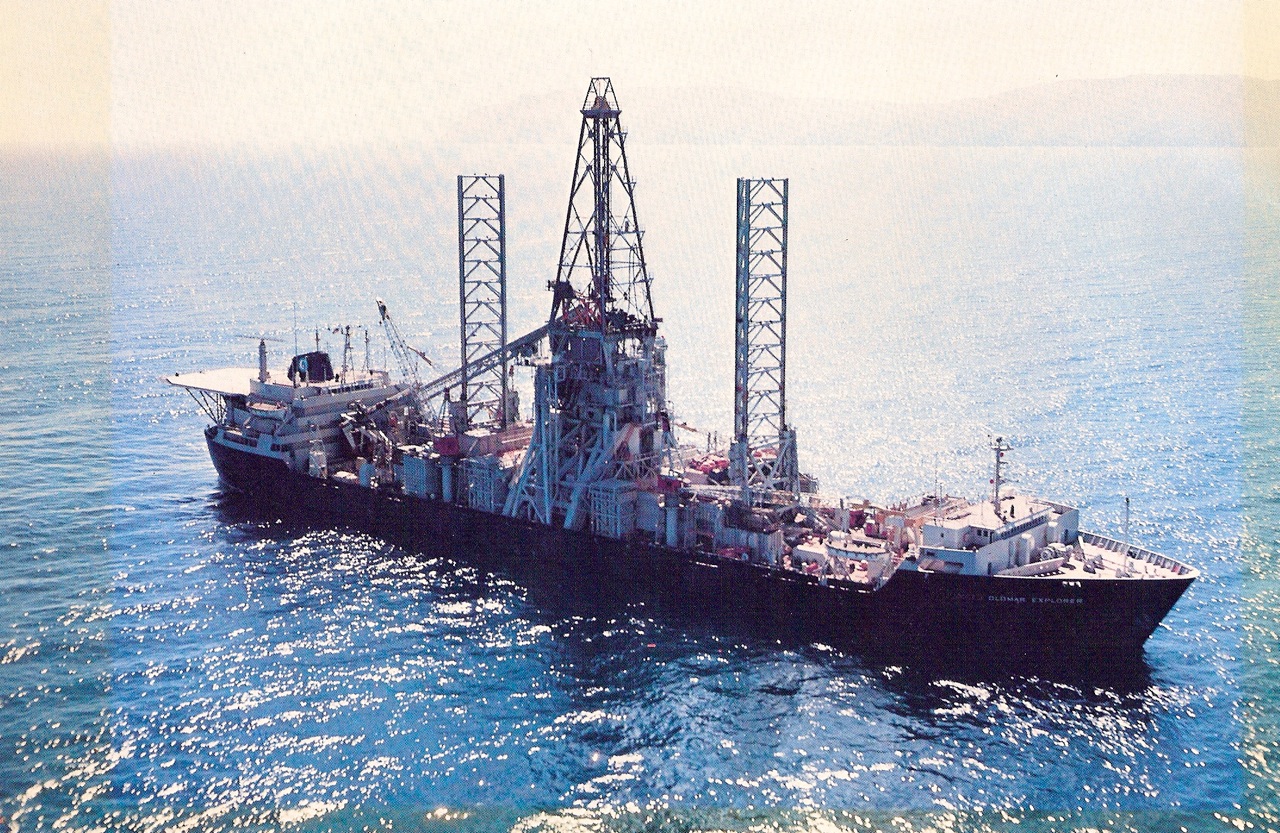USNS Hughes Glomar Explorer
A wise man knows his limitations.’ And a bold one seizes opportunities.”
― Tom Clancy, The Hunt for Red October.
Project AZORIAN was a covert operation by the US Central Intelligence Agency (CIA) to recover a sunken Soviet submarine, K-129, from the Pacific Ocean floor in 1974. K-129 was a Golf II class diesel-electric powered submarine that served in the Pacific Fleet of the Soviet Navy. It was launched in 1959 and one of six strategic ballistic missile submarines assigned to the 15th Submarine Squadron based at Rybachiy Naval Base near Petropavlovsk. The submarine carried three SS-N-5 Serb nuclear missiles in an extended sail/conning tower.
The SS-N-5 Serb missiles were submarine-launched ballistic missiles developed by the Soviet Union and employed by the Soviet Navy from 1963 to 1989. They were the first Soviet nuclear missiles that could be launched from a submerged submarine and had a range of up to 1650 km. They used a liquid-fuel rocket with a single nuclear warhead of about 800 kilotons. They were carried by Golf II and Hotel II class submarines.
The mission of the K-129 was to patrol the waters near Hawaii and be ready to launch its three nuclear missiles at the US west coast in case of war. The K-129 also supported North Korea, an ally of the Soviet Union, and monitored US naval operations in Southeast Asia.

The K-129 sank on 8 March 1968, approximately 1,600 miles northwest of Hawaii, with all 98 crew members on board. The cause of the sinking of the K-129 is still disputed. The Soviet Navy failed to locate the wreck, but the US Navy found it in August 1968 using acoustic data and underwater cameras. The US Navy used four Air Force Technical Applications Center (AFTAC) sites and the Adak Sound Surveillance System (SOSUS) array to identify an acoustic event on 8 March that likely originated from the submarine. The US Navy then deployed the submarine USS Halibut to locate the wreck using a towed device called the Fish, which had cameras, strobe lights, and sonar. The Fish confirmed the identity and location of the K-129 at a depth of about 16,000 feet.

The CIA used a specially designed ship, the Hughes Glomar Explorer, which had a large mechanical claw and a hydraulic system to lift the submarine from a depth of 16,500 feet. The claw was a steel structure with four fingers that could grasp the hull of the submarine and hold it securely. The claw was attached to a heavy-duty pipe that extended from the ship to the ocean floor. The hydraulic system was used to raise and lower the pipe and the claw. The mission was disguised as a deep-sea mining venture by Howard Hughes, a billionaire who supported the CIA’s cover story. The CIA hoped to gain valuable intelligence on Soviet nuclear capabilities and cryptography from the submarine.
The project was one of the most complex, expensive, and secretive intelligence operations of the Cold War, costing about $800 million at the time. It involved years of planning, research, engineering, and fabrication. The CIA had to design and build a ship that could withstand the enormous pressure and weight of lifting a 2,700-ton submarine from almost three miles below the surface. The CIA also had to develop methods for preserving paper that had been underwater for years in hopes of being able to recover and read the submarine’s codebooks. The CIA also had to evade Soviet detection and interference, as well as media scrutiny and public curiosity.

In June 1974, right before the ship’s departure. a secret document linking Howard Hughes, CIA and the Glomar Explorer was stolen from a Hughes office in Los Angeles by burglars in June 1974, right before the ship’s departure. CIA was anxious to get it back and asked for FBI’s help, who also involved the Los Angeles Police Department. The investigation attracted attention, and some journalists started to hear whispers of a sensational story by the fall of 1974. The operation was exposed by the press in 1975. Jack Anderson is credited by TIME magazine as breaking the story in a March 1975 radio broadcast, rejecting a plea by then Director of Central Intelligence William Colby to suppress the story.
The project was only partially successful because only a portion of the submarine was recovered, due to a mechanical failure in the claw. The section contained two nuclear torpedoes, various cryptographic equipment, and six bodies of Soviet sailors. The rest of the submarine, along with its missiles and most of its crew, remained on the ocean floor.
The CIA recovered six bodies from the wreck and gave them a formal burial at sea with full military honors on 4 September 1974, about 90 nautical miles southwest of Hawaii. The bodies were placed in a steel chamber due to radioactive contamination from the submarine’s nuclear torpedoes. The burial ceremony was filmed and later provided to the Soviets when the operation became known.
After the partial recovery of the submarine, the Glomar Explorer was used for some experimental ocean mining voyages, but it did not attract any buyers. In the late 1990s, it was leased and refitted by a petroleum company for deepwater drilling and exploration. The ship was eventually scrapped in 2015.
Author Tom Clancy was inspired by Project AZORIAN when he wrote his bestselling debut novel The Hunt for Red October in 1984. The Hunt for Red Octobe tells the story of a Soviet a nuclear missile submarine commander who defects to the United States with his crew and submarine. The novel is a thrilling blend of espionage, military action, and political intrigue, as the Americans and the Soviets race to find the rogue submarine before it can launch its missiles or be destroyed by its pursuers. The novel was adapted into a movie in 1990 starring Sean Connery and Alec Baldwin.
*The views and opinions expressed on this website are solely those of the original authors and contributors. These views and opinions do not necessarily represent those of Spotter Up Magazine, the administrative staff, and/or any/all contributors to this site.
